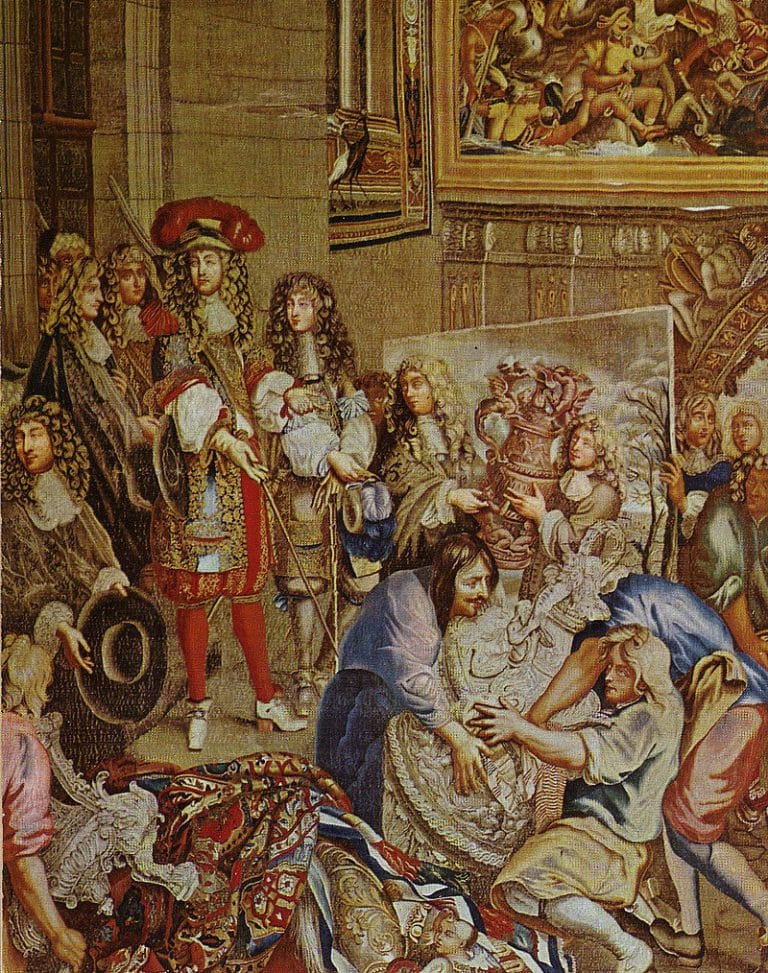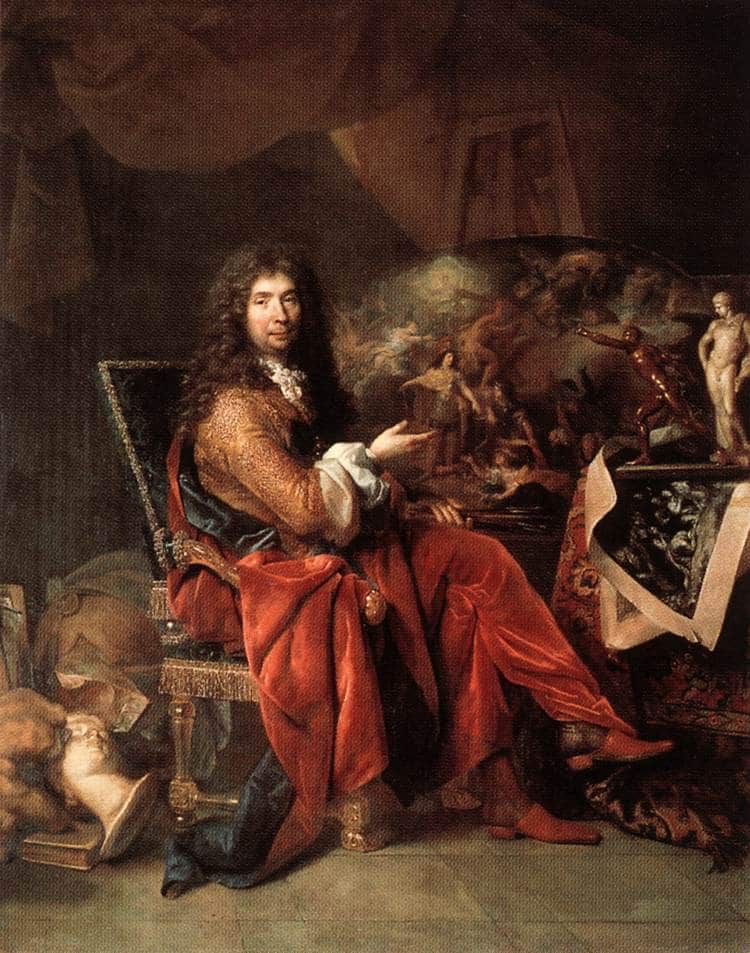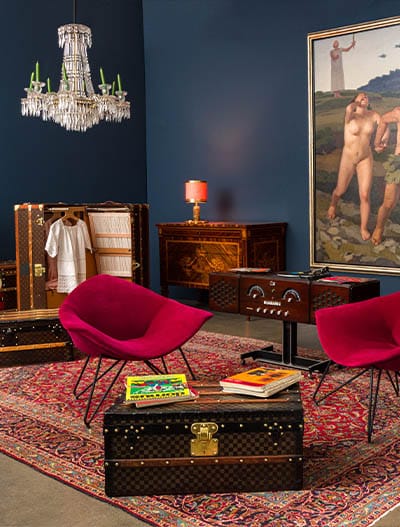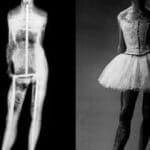Tapestries
If already in previous eras it was not unusual to wallpaper the walls with refined coatings, also with the aim of insulating the rooms from the cold, it was certainly in the Middle Ages that tapestries began to be real works of art very sought after.
Renowned factories specialized in the production of these masterpieces began to establish themselves.
The tapestries are in fact extraordinary textile works, in which the threads, skilfully worked, form scenes, often bordered by a richly decorated frame. The tapestries were very precious works and, for this reason, they often testified to the wealth and economic possibilities of those who owned them. They were also highly sought after for the ease with which they could be removed and relocated on the walls.
This peculiarity made it possible to replace them with a certain frequency, according to the taste of the moment in the case of a private residence, or to celebrate different religious holidays if they constituted the decorative and liturgical apparatus of a church. The great ease of transport also allowed the nobles to take them with them while traveling to the various residences, allowing them to always have these precious works at their disposal. In fact, the tapestries lacked a rigid support and once folded they could be easily placed in crates which were then loaded onto wagons or pack animals.
The art of tapestries developed above all in France, spreading also in Flanders and becoming in demand by all the most important European courts.
The tapestries were made using looms, certainly fundamental was the skill of the weaver who had to be quick but precise to outline the figures. The materials with which they could be made were different. If during the Middle Ages it was wool that was most used, also because it was easily available, the materials gradually became more precious. In the fourteenth century it is attested that the manufacturers of Arras used a better quality of wool, thinner, together with gold and silk threads, distinguishing themselves precisely for the great skill in the processing of metal threads.
The mixed use of silk and wool made it possible to obtain a finer fabric and often these yarns were woven together with golden or silver threads that further embellished the tapestry. It is no coincidence that the name of the small French manufacturing center was Italianized into “tapestry”, giving the name to the textile works that had made it so famous.
There was a change in the art of tapestry in the Renaissance period, as a natural consequence of the hierarchical conception of the arts, which saw the predominance of painting.
The master weavers, who in previous centuries had great creativity and artistic autonomy, were progressively forced to submit to the project of an artist, characterizing themselves more and more as mere copyists. Certainly the skill of the masters and manufacturers was always appreciated for the workmanship, but still linked to the meticulous rendering capacity of the reference model. Between the fifteenth and sixteenth centuries, commissions to great artists spread more and more for the creation of large cartoons that the factories would have used as a reference. Among these, the most famous are certainly those made by Raphael, with the stories of the sight of Saints Peter and Paul commissioned by Leo X and to be placed in the Sistine Chapel.The use of mixed silk and wool made it possible to obtain a finer fabric and often these yarns were woven together with golden or silver threads which further embellished the tapestry. It is no coincidence that the name of the small French manufacturing center was Italianized into “tapestry”, giving the name to the textile works that had made it so famous.
But the leading nation in the production of tapestries was without a doubt France. In particular, Francis I founded a factory that was at his complete service and with which he could evade the rigid professional system, in order to eliminate the influence of Flemish tapestries, while calling himself foreign artists, probably from Tournai.

Subsequently, Henry II decided to establish a real professional training center, the foundation for a future indigenous Parisian manufacturing. For this project he made use of the teachings of the master weavers of Tournai, who took care of transmitting the trade to the orphans of the Hôpital de la Trinité, an institute that gave its name to the manufacture itself. In order to provide them with as complete training as possible, the students were also taught notions on painting and the techniques of carding and spinning wool.
But certainly the most famous manufacture for the production of tapestries was that of the Gobelins, organized in 1667 by public decrees of Jean-Baptiste Colbert at the behest of Louis XIV, which decreed its belonging to the royal furniture manufacture of the Crown.
Charles LeBrun was entrusted with the direction, it was he who received the credit for fully understanding the peculiarities of the tapestry technique. He was in fact in charge of providing the drawings from which the artists belonging to the manufacture derived the “model”, ie a painting of the same size as the tapestry. If LeBrun was very careful in the faithful reproduction of his own design and modeling, he never tried to subordinate the tapestries to painting, avoiding providing precise indications regarding the colors to be used and leaving a certain freedom to the master weavers in the chromatic transposition.

On the other hand, the need to have a large number of models and cartoons executed led Le Brun to call in a large group of painters. After the golden age of tapestries, literally speaking precisely due to the great use of the precious metal thread, it suffered a crisis in 1690, due to the change of political direction. In the face of the pomp aimed at celebrating the figure of the Sun King, tapestries began to be produced with
greater attention to color rendering, faithfully drawn from the preparatory model. Compared to the celebratory production of previous years, the tapestries became predominantly narrative, now purely decorative works. In the following centuries the tapestries were always in great demand, so much so that still in several eighteenth-century palaces they still occupied entire walls of the great noble palaces.




